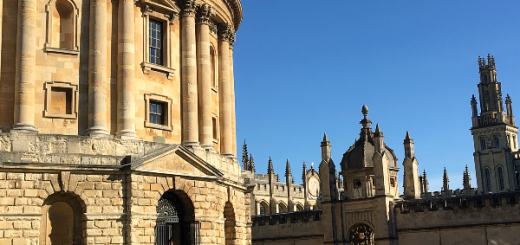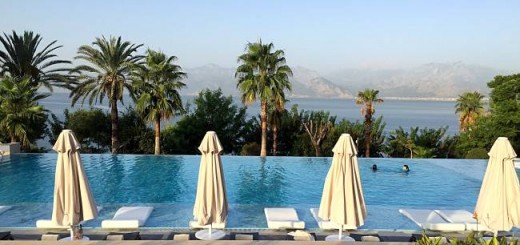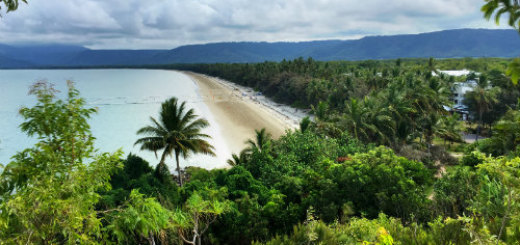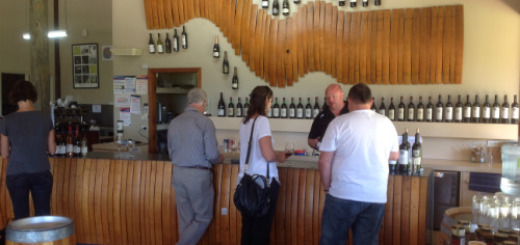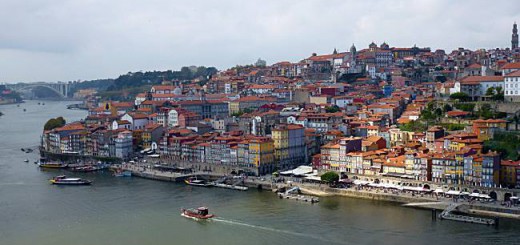Malta
The Republic of Malta, because of its strategic position in the Mediterranean, has been ruled by a succession of naval powers, the most recent being Britain. As a consequence, English is an official language and traffic drives on the left side of the road. And since many Maltese people emigrated to Melbourne following WW2, we found ourselves feeling quite at home here seeing the familiar surnames on shops and advertising. In fact, there are more Maltese people living in Melbourne than there are in the islands of Malta!
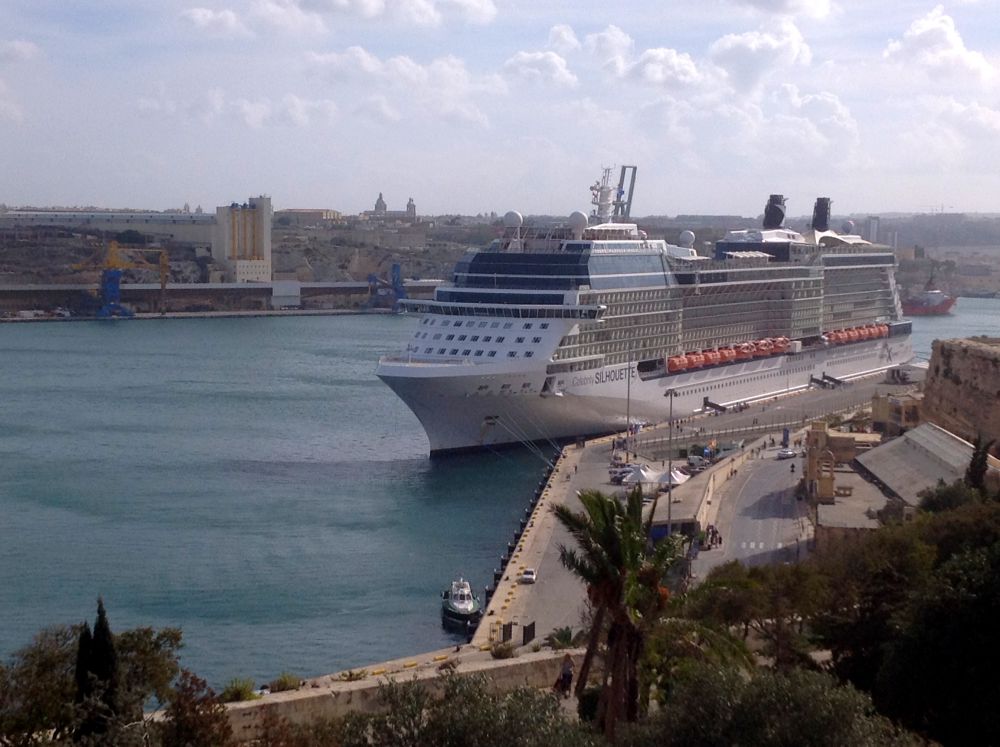
We arrived on the Celebrity Silhouette for just one day’s sightseeing, determined to see as much of the main island as possible. The view of Valetta and the dockyards from the Grand Harbour was spectacular. The city itself is only a short distance away from the cruise terminal, but on a much higher level, so it pays to check out the elevator near the arch across the harbour road. We chose to take one of the Hop On – Hop Off buses that stop right near the terminal. There are several routes, so we took the longest one – the Blue Route – that looped to the north end of the island after stopping at Mosta and Mdina.

The tour takes you up the steep slope from the terminal, stopping at the City Gate entrance to Valleta for those who wish to explore the city and then heads inland. The next stops are at the San Anton Gardens and the Ta’ Qali Crafts Village, which is a huge handicrafts centre in a former aerodrome where you are encouraged to get your souvenirs – chiefly of glass or ceramics.
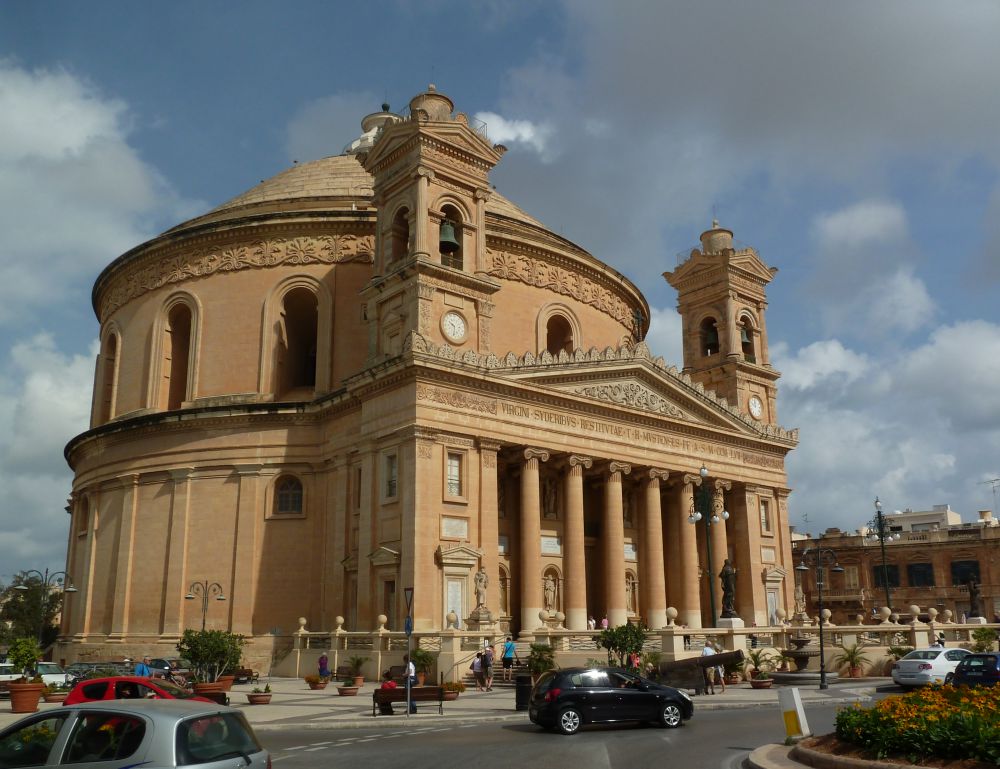
Mosta is a busy market town. At its centre is a magnificent church which has the third largest unsupported church dome in Europe. In World War II, the church took a direct hit from a German bomb that pierced the dome, but failed to explode. So the locals venerate the church as the place of a miracle. Unfortunately for us it was closing just as we got there.

Mdina is the old capital of Malta, dating back to 1500BC. It is one of Europe’s finest examples of an ancient walled city with its mix of Medieval and Baroque architecture, impressive palaces and narrow streets. The main attractions are the Cathedral of the Conversion of St Paul whose design inspired many of the other churches in Malta, the cathedral museum, and the views, since the town is situated high on a hill.
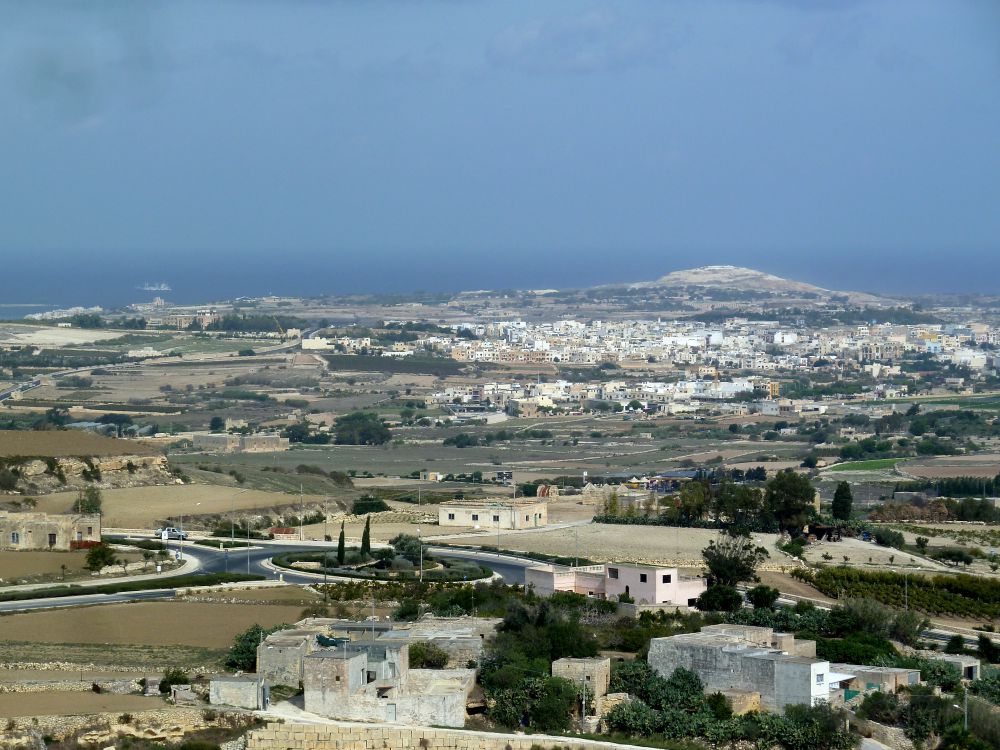
We took a self-guided walking tour which led us to the top of one of the bastions with a panoramic outlook to the north of the island.
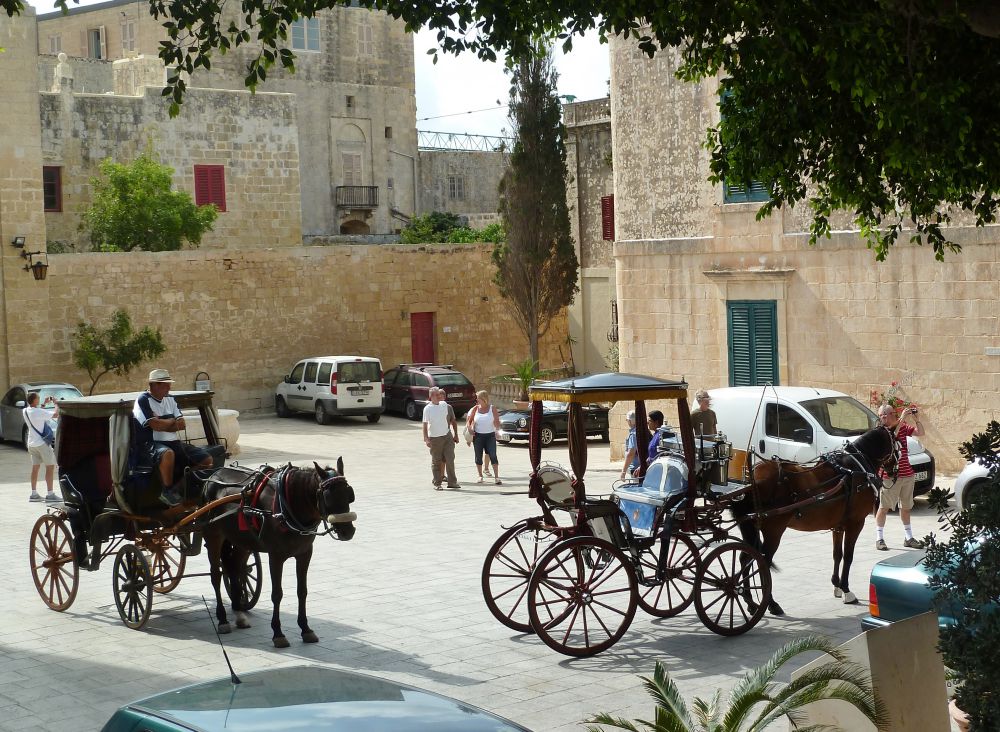
The town houses only a few hundred people now and is off-limits to cars except for those of the residents, which are few. It does not take long to walk around the town or you can hire one of the horse-drawn carriages for a tour.
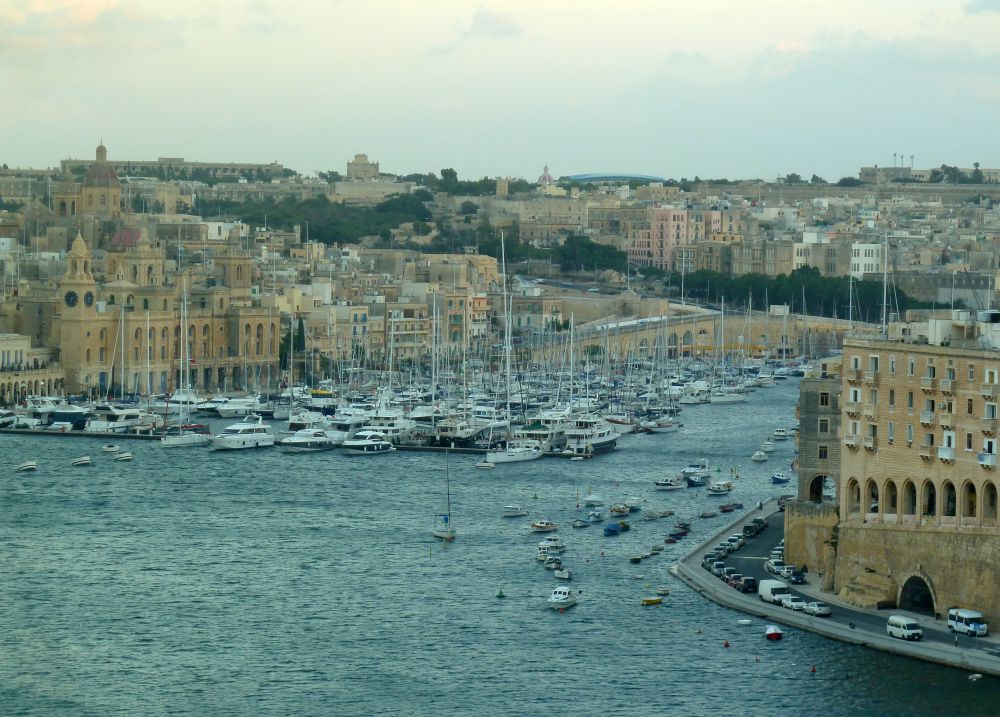
Further north, Golden Bay and St Paul’s Bay attract the beach-going crowd. Bugibba and its neighbours Qawra & St. Paul’s Bay are Malta’s largest seaside resort towns. The coastline has been developed into a distinct resort with hotels and numerous holiday apartments due to the unspoilt sandy beaches, safe swimming conditions and fine views. Closer to Valletta, the towns of St Julian’s and Paceville house Malta’s main nightlife centre with clubs, casinos, restaurants, cafes & bars.

Finally back at the main harbour, the HO-HO ticket allows you to take a complimentary boat tour of two natural harbours and their ten creeks. Visiting historical forts, battlements and the ten creeks from the sea gives a different perspective of Malta’s busy dockyards and marinas.

By then we were running short of time, so we opted to take a quick walk around Valletta by ourselves instead.
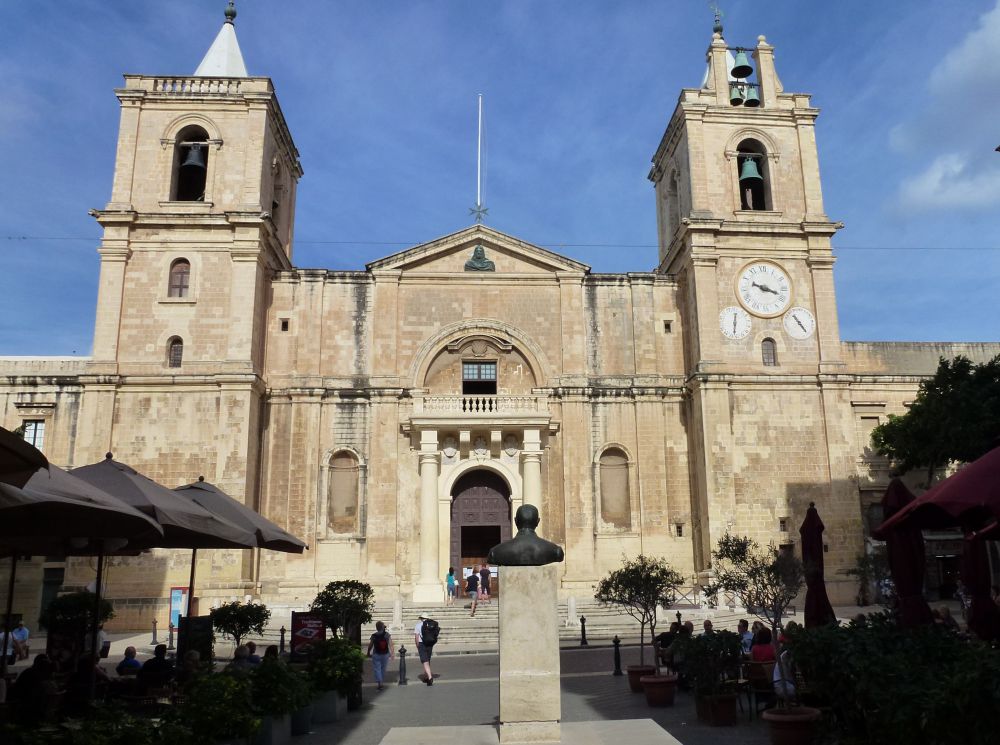
Valletta contains buildings from the 16th century onwards, built during the rule of the Order of St. John and is recognised as a World Heritage Site by UNESCO. Although the city has a unique collection of churches, palaces and museums, arguably the one with most historic significance is St John’s Co-Cathedral, built by the Knights of St John. There is such a contrast between the simple and sober façade of the building and the colourful and elaborate decorations and artwork of the interior.
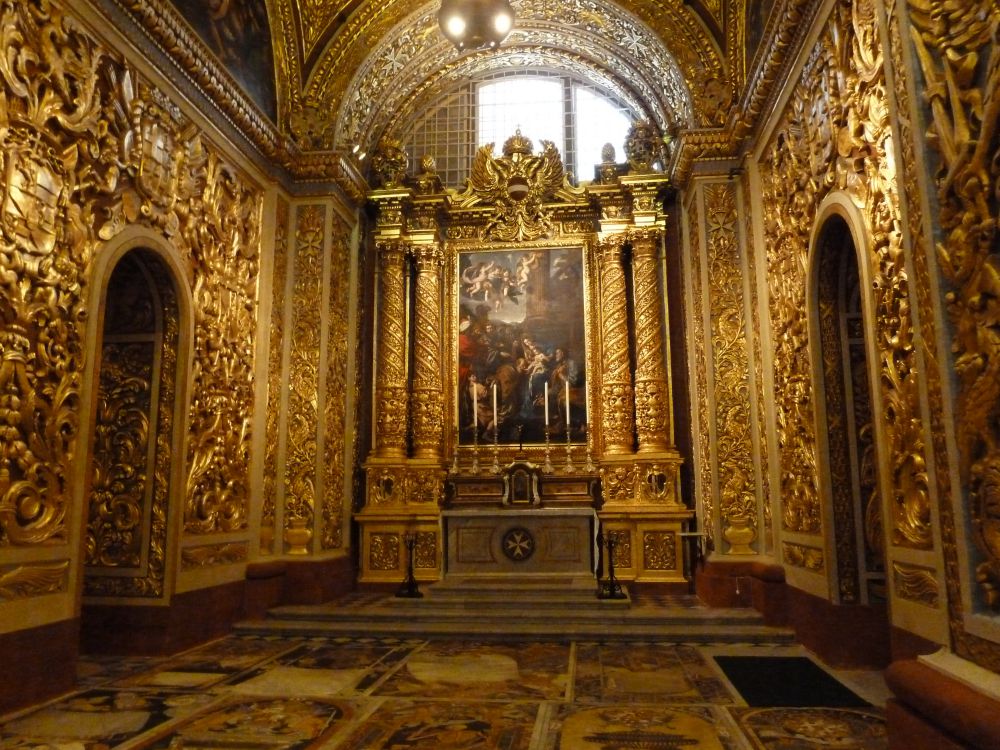
A number of renowned artists and sculptors including Caravaggio contributed to the beautiful interior. The floor of the entire nave is covered with colourful marble tombstones which commemorate some of the most illustrious Knights of the Order.

Each tombstone is highly decorated with either angels, battle scenes, skeletons, skulls, or laurel wreaths and display epitaphs in Latin describing the knights’ virtues and achievements. No visit to the Cathedral is complete without a tour of the museum, which holds beautiful collections of sacred vestments, Flemish tapestries, a magnificent gilt bronze monstrance intended to hold the relic of the Baptist’s forearm, and an important collection of illuminated choral books as well as other objets d’art.

Outside the City Gate, the Upper Barrakka Gardens is one of Valletta’s most beautiful parks and the highest point of the city walls. Its bordering terrace offers a clear view over the Grand Harbour and the old towns of Senglea and Vittoriosa, as well as over the shipyard and the lower-lying parts the capital. But the best views of all were to be had as we sailed away – from deck 15 of the Silhouette the elevation is so high it was like a bird’s-eye view.
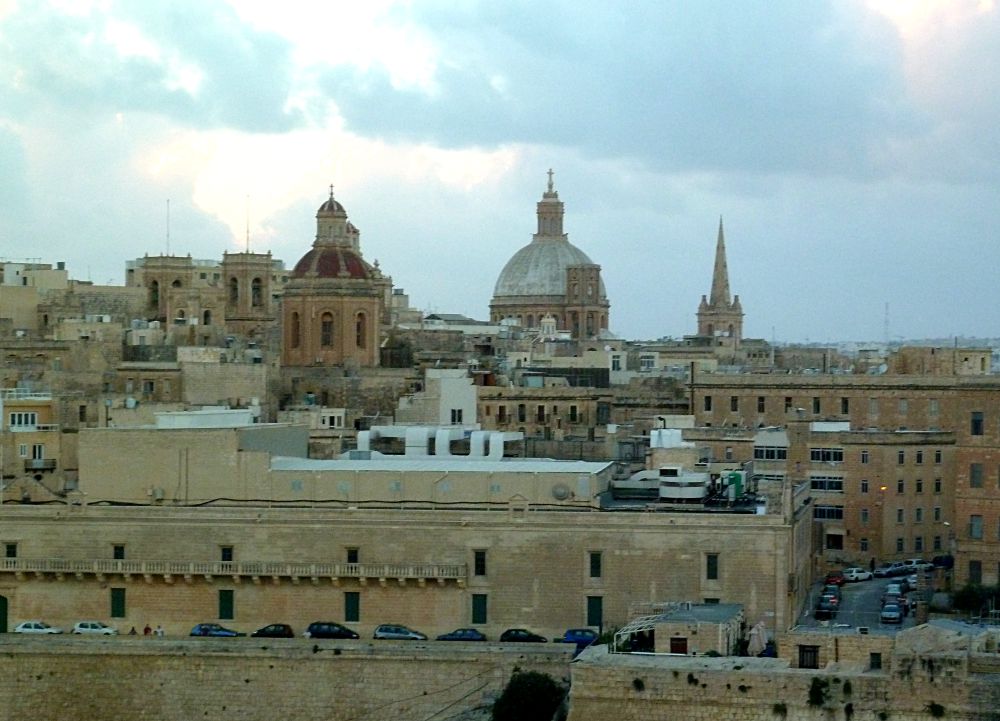
Related articles
- Malta14, Mdina1 (slideshare.net)
- Malta melts my heart (aquila-style.com)
- My 6 Favorite Moments In Beautiful Valletta Malta (landlopers.com)
